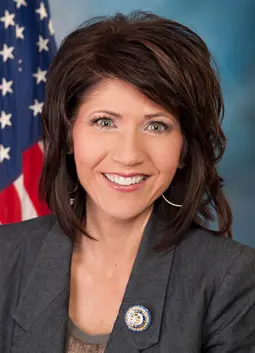In an unusual fiscal year for South Dakota, residents and state officials grapple with a mix of higher-than-expected revenues and unavoidable budgetary constraints. As the legislature deliberates over Governor Kristi Noem’s proposed 2025 budget, attention shifts towards an unexpected source of revenue—unclaimed property—to address the state’s financial challenges while sparking new opportunities.

Kristi Noem
Despite initially optimistic revenue projections, characterized by Jim Terwilliger, Commissioner of the Bureau of Finance and Management, as higher than anticipated, South Dakota still faces a significant dip in ongoing income streams. Sales tax and contractors excise tax collections reveal a concerning drop, totaling nearly $30 million, prompting state officials to propose trimming expenses in previously stable areas such as the South Dakota Public Broadcasting (SDPB), the state library, and essential building maintenance.
A major talking point emerging from the state’s budget discourse is the staggering $300 million influx in unclaimed property. Such funds result from inactive assets, often originating from unengaged federal COVID-19 stimulus dollars, which banks transmute to the state following three years of silence from account holders. This figure quadruples typical annual collections, presenting both a liability and a fiscal opportunity.
Treasure Josh Haeder, who oversees these unclaimed assets, underscores their potential to bolster the state’s financial landscape through innovative long-term planning. “What we’ve talked about is an unclaimed property trust fund,” Haeder states. “And really, what that would say is all of the money that comes in—once we’ve made our best effort to return it—and we return those dollars… what is not returned goes into a trust fund that is managed by the South Dakota investment council.”
This proposed trust fund could consistently generate an annual revenue ranging between $40 million to $70 million, a notable contribution toward balancing South Dakota’s financial planning amidst downturns in ongoing revenues. Should this proposal proceed, it would mark a pivotal shift in managing state funds, providing a cushion against economic oscillations.
Tony Venhuizen, R-Sioux Falls, a central figure in legislative budget discussions, noted that post-Great Recession budget cuts were more severe than current circumstances. “Since the governor’s budget address, we’ve had two more months of revenue come in and really nothing that would make me a lot more optimistic about what our projection would be.”
The proposed budget also includes a strategic focus on infrastructure, prioritizing large-scale projects like replacing the men’s prison near Sioux Falls. This decision aligns with previous fiscal strategies that leveraged federal relief for substantial, one-time investments essential to South Dakota’s long-term development goals.

Jim Terwilliger
Looking forward, South Dakota’s leadership continues to engage in robust discussions, balancing immediate fiscal responsibilities with future-proofing strategies. As the state treads through this unique budget period, the resonance of innovative revenue sourcing becomes increasingly vital. Drawing on the available one-time funds not only redresses current constraints but also sets the stage for sustainable fiscal policy.
For a state with rich cultural heritage and strong community ties, ensuring the stability of public services while promoting growth through strategic initiatives remains a priority. The potential establishment of an unclaimed property trust fund underscores South Dakota’s commitment to resourceful governance and fiscal prudence, emblematic of the state’s enduring spirit.
As South Dakota navigates these complexities, its ability to adapt and innovate in financial management highlights the intricate dance between tradition and modern fiscal policy—a narrative that continues to unfold within the state’s budgetary halls. South Dakota stands at a crossroads, poised to leverage its unique assets to ensure a prosperous future for its citizens.
